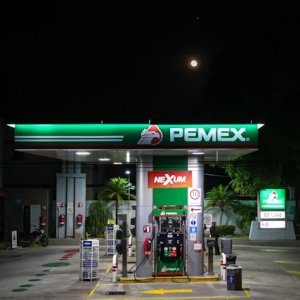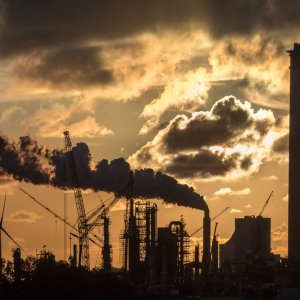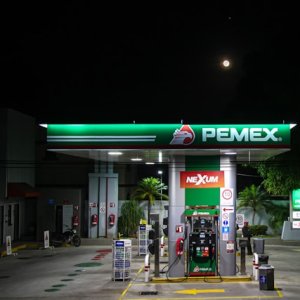
A Collaborative Push to Redesign Offshore Operations
 By Pedro Alcalá | Senior Journalist & Industry Analyst -
Thu, 07/15/2021 - 13:33
By Pedro Alcalá | Senior Journalist & Industry Analyst -
Thu, 07/15/2021 - 13:33
You can watch the video of this panel here.
Offshore suppliers and service providers had to contend with a double-edged sword during 2020; on one hand, the designation of the sector as an essential economic activity meant that core operations were to continue uninterrupted. On the other hand, the delay and cancelation of various projects, coupled with the oil barrel price crisis, led to a very competitive environment that not all companies survived. This, coupled with the fact that Mexico’s offshore sector was in a recovery curve of its own from the crisis created by 2015’s downturn. It is in this context that the second panel of Day 2 of Mexico Oil & Gas Summit 2021, titled “Supplier Priorities in the Offshore Services Market”, incentivized a sharing of lessons learned in the path to achieve this survival.
The panel was moderated by Luis Vielma Lobo, CEO of CBMX, who began by explaining the nature of the industry and its context with the following remark: “The pandemic has transformed the global village of the oil and gas industry, and all offshore supply chains have experienced major processes of adaptation as a result.” Vielma Lobo began the discussion by asking panelists about the most important lessons learned in 2020 and the way in which these lessons impacted on how they draw up their contracts with their clients.
Panelist Sonia Castellanos, Geomarket Manager for Mexico and Central America at Schlumberger, began her remarks by adding to Vielma Lobo’s context, stating that the process of navigating the pandemic and the overall crisis it has created in the offshore oil and gas sector is still ongoing and by no means has been left in the rearview mirror of 2020. For Castellanos, the key term was, at first, acceleration: any new process redesign that Schlumberger had been discussing for years had to be implemented in a matter of weeks or months at the most once the pandemic started.
Castellanos was clear in saying that the current prospects for the offshore sector were in a state of reliable recovery. “Higher crude prices and economic reactivation are a reason for cautious optimism. Nevertheless, the sector needs to carefully navigate the current opportunities to benefit.” One of the impacts of 2020 that Castellanos needed to adapt to right away was a reduction in the offshore sector’s available qualified workforce, which coupled with a scarcity of materials meant that available resources needed to be mathematically rationed, including in contracts with suppliers and service providers. These contractual practices needed to become more flexible and open to proactive solutions and also less distributed so that they could be more solidly reliable; the times of contracts that included “a little bit of everything” were over, and less moving parts at a time of crisis has meant less risk. According to Castellanos, one of the most important changes that Schlumberger made in its offshore activities was to increase the amount of remote operations the company did, from 39 to 61 percent. This was achieved through intense planning and coordination, and a clear and transparent communication policy. Castellanos believes these types of changes will have to become more general in the industry. “All indicators point to increased activity in the industry. Companies will need to adequately and flexibly use tools and technologies to get optimal returns.”
Panelist Cesar Vera, CCO of Naviera Integral, was asked not just about lessons learned but about what must be done in Mexico’s offshore sector to create a truly healthy and consistent service economy. Vera explained that change in Mexico’s offshore sector is hard to direct or even influence from a top-down perspective, because it changes in a recursive fashion, meaning constantly; everything that happens in the industry impacts it directly one way or another, week after week. Even the recent news of SENER giving PEMEX control over Zama will have large ramifications for the sector. For Naviera Integral, entering into a versatile mode of operation has allowed them to thrive not just the last 12 months but the last five years, since the offshore crisis of 2015 and 2016.
Vera believes that the current path of the industry has the chance to support constant offshore activity, from strengthening PEMEX to increasing the needs of private operators. However, the clients of fleet managers will have to take a chance with longer term contracts if they want to promote economic health and growth in the sector. “Fleets do not work in the Uber model. Having a vehicle in lease is not the same situation as contracting a ship. Here, long-term contracts with efficient costs and operational provisions are essential,” Longer term contracts enable the coordination and planning necessary to navigate contingencies. Vera believes that the industry must have a clear view of its objectives; decarbonization goals have to be balanced with production goals in a way that makes sense.
The way in which the offshore sector contracted was hard to measure and explain precisely, argued panelist Hermes Aguirre, Mexico Country VP of Halliburton. Aguirre understood his company’s responsibility to be the continuity of all operational flows. This, however, meant restructuring their finances; as he explained it, “Despite the pandemic, we maintained our same quality level. Nevertheless, we had to make several adaptations, increase our efforts and costs in the process,” Aguirre made it a priority to maintain open channels of communication with all contractors and clients, so that emergencies could be attended promptly. Continual improvement policies were implemented so that investment capital was never lacking. The importance of not cutting down on human resources and talent development amidst a crisis was also highlighted by Aguirre.
For panelist Javier Cabrales Mendoza, Coating InfluXpert O&G at PPG Comex, the rate of adaptation to all the circumstances that presented themselves in 2020 depended on the rate of digitalization. “The big challenge of the energy sector is to use digitalization to keep the supply chain moving and take advantage of opportunities. It is all about speed.” In Cabrales Mendoza’s view, digitalization determined the rate at which organizations could absorb and adapt to new concepts as the pandemic began, and this turned out to be the key success factor during this crisis. He also mentioned the question of communication and coordination as being facilitated by this same adoption of digital technologies.
















